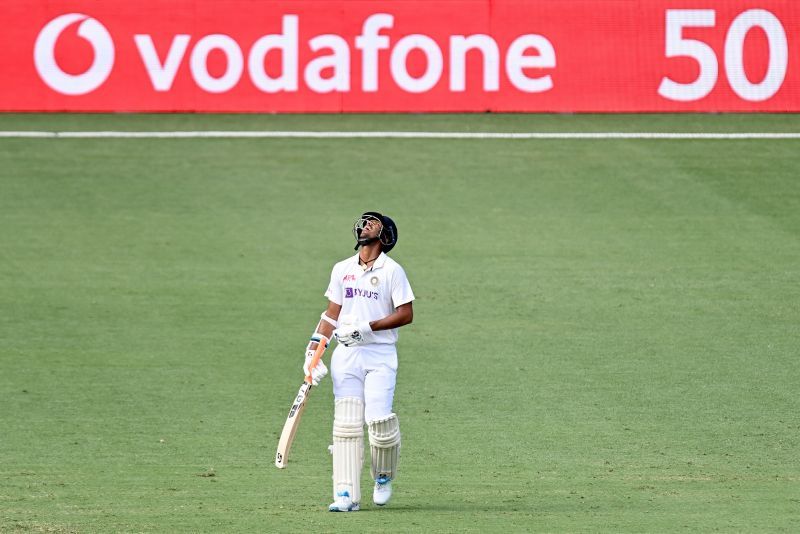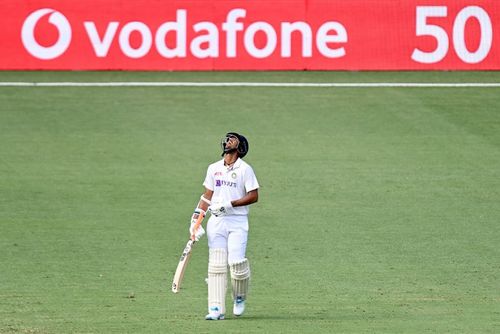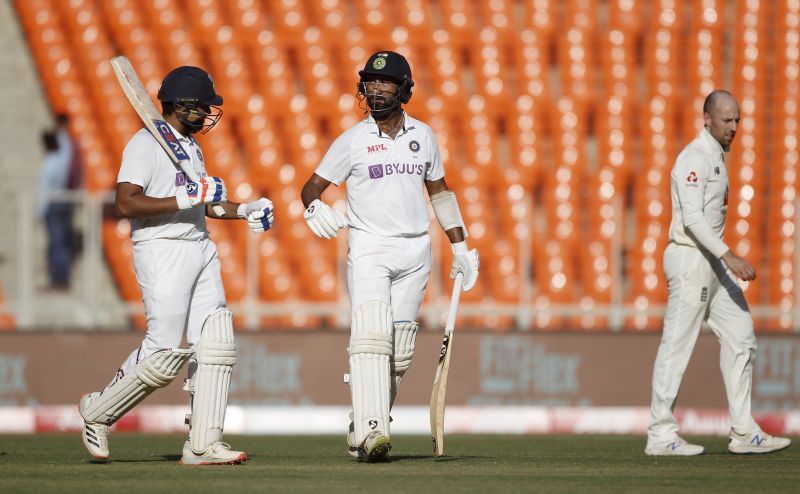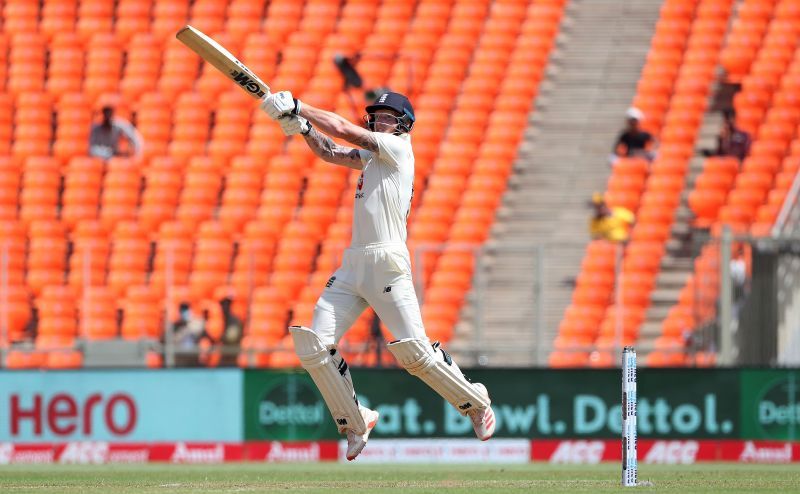
Is it time we stopped fantasizing about hundreds in cricket?

A few days ago, with a game of cricket tantalizingly poised at the Narendra Modi Stadium, Washington Sundar strode out to bat, with a billion eyeballs trained on him. Prior to his arrival, India had lost a slew of wickets and were staring at a spectacular collapse – one that would’ve accorded England the initiative they craved.
Yet, in the company of one Rishabh Pant, Washington Sundar buckled down and thwarted each obstacle the visitors threw at him. By the time the partnership broke down, India found themselves in a position of ascendancy. More importantly, courtesy the stand, they’d managed to suck the wind out of the English sails, meaning that they ultimately consigned them to their third successive defeat in Test cricket on Indian soil.
However, in the aftermath of the encounter, there was one moment, or rather, a couple of moments of madness that dominated a few back pages across the country. The incident in question being the dismissals of Ishant Sharma and Mohammed Siraj during India’s essay.
Though the departure of the pair, with all due respect, might not make many headlines in ordinary circumstances, the aforementioned directly contributed to Washington Sundar missing out on his maiden ton in international cricket.
That it came just a few matches after his father had famously quipped that he was upset with his son for not crossing the three-figure mark, despite digging India out of an almighty hole at the Gabba against Australia, only emphasized the nation’s supposed obsession with centuries.
Yet, in modern cricket, there seems to be enough evidence to suggest that one might be prudent to buck that trend, instead concentrating more on innings of substance – knocks that win games of cricket. While one is not trying to understate the importance of a massive three-figure innings, it is also vital that one starts appreciating essays that might have otherwise flown under the radar.
Several sub-hundred knocks have led to Indian wins in Test cricket lately
To put things into perspective, during much of India’s historic series triumph Down Under, they had their backs against the wall, whether it was recovering from the debacle at Adelaide or the much-publicised ill-fate they suffered with injuries.
However, on each occasion, they found someone who rose from the ashes like a phoenix. Though that materialized in only one ton (Ajinkya Rahane at Melbourne), there were countless displays of grit, determination and, of course, skill.
At Sydney, India faced the prospect of batting for more than a day towards the end of the encounter. Unfortunately, they lost a few wickets at the start of Day 5, meaning that Cheteshwar Pujara had to drop anchor. Well, at least until Rishabh Pant grabbed that particular game of cricket by the scruff of its neck.

Over the next couple of hours, Pant and Pujara blended fire and ice beautifully as they staved off the threat of the Australian fast bowlers. Post it, Hanuma Vihari – batting on one leg, and Ravichandran Ashwin – batting with a sore back, stood tall despite being battered and bruised.
However, none of the aforementioned managed to breach the three-figure mark. It is fair to say, though, that the vitality of their innings hasn’t been dwarfed by that particular yardstick, or the lack of it.
A game of cricket later at the Gabba, which has long been considered a fortress for Australia, India needed to score 329 in the final innings to complete a remarkable series victory. Again, early scalps had put the hosts in the driving seat, with many wondering if Tim Paine’s sledge of waiting for India to come to Brisbane wasn’t as dumbfounded as it seemed prima facie.
Cheteshwar Pujara, Rishabh Pant and Shubman Gill, though, had other ideas. Each produced an innings of note, meaning that they ultimately hauled India across the line in a stupendous rendition of Test cricket.
While Pujara’s compactness deflated the Aussies, Gill’s dexterity made them rummage for answers they felt they had already acquired. As for Rishabh Pant, well, he counter attacked the hosts with such conviction and flair that Australia would’ve been forgiven for wondering if a rechristened version of Adam Gilchrist had popped up on the scene.

Even in the recently concluded series against England, there were numerous sub-hundred innings that proved to be the decisive tilting scale in tight contests of cricket. Though it is also imperative to recognize the centuries Ravichandran Ashwin and Rohit Sharma scored, it is perhaps even more paramount to underlie the significance of some other knocks that were just as influential in winning games of cricket.
For those wondering, during the 2nd Test, India found themselves in a precarious situation in the second innings, wherein a capitulation could’ve brought England back into the encounter, albeit slightly. At that juncture, Virat Kohli unfurled arguably his best innings in any form of cricket since 2020, notching up a well-crafted 62.
In the 3rd Test, when batsmen from both sides fell like nine pins, Rohit Sharma compiled an excellent 66-run knock. Incidentally, that innings accounted for 17.05% of the total runs scored in that manic game of cricket – again, highlighting that a sub-hundred score can be just as valuable as a three-figure score.
Additionally, there are a couple of other major factors that have exponentially increased the value of short but equally effective essays.
Firstly, the advent of T20 cricket has had a massive effect on how the longest version of the sport is played. Subsequently, Test cricket these days is a lot more result-oriented, with these games also moving at a much quicker pace. In the process, innings that create an impact instantly have become incredibly essential, for it doesn’t just rattle the opposition cage, it also manufactures time.
Also, cricket nowadays relies a lot on momentum shifts – a facet that has always been crucial but has assumed a larger role lately. Unsurprisingly, knocks that completely change the momentum hold teams in much better stead than essays that dish out a slower death to the opposition.

In fact, both Ben Stokes and Joe Root produced magnificent performances in the 1st Test of the recently concluded series against India. However, it was perhaps the former’s innings that enabled England to register their first win in Test cricket in India since 2012.
Most tellingly, a lot of the impactful knocks in cricket recently have been belligerent in nature, meaning that they’ve been fraught with danger, although potential returns have almost always offset it.
Yet, the element of risk has prompted such essays to be a lot shorter, often ending before a batsman has crossed the three-figure mark. In no way, though, are these less distinguished than another knock that has fetched batsmen a century.
Similarly, in ODI cricket, a majority of these sensational innings don’t always culminate in a ton, considering the time constraints and also, the fact that their shelf-life is markedly briefer. As far as T20 cricket is concerned, well, hundreds are a rare occurrence, meaning that one doesn’t have enough time to keep harping about centuries.
Thus, as cricket continues its evolution and begins exploring newer horizons, both tactically and technically, it is perhaps imperative that one starts placing lesser emphasis on three-figure scores, for sub-hundred tallies are just as defining.
Even though Washington Sundar’s father was quite miffed and would’ve felt gutted at his son not bagging his maiden ton in Test cricket, one reckons neither Washington, nor the Indian team would’ve cared an iota, for his innings, both at Ahmedabad and at Brisbane, produced the desired impact and won India a game of cricket.
Perhaps, the latter is the attitude that needs to permeate through the cricket fraternity too. Especially after a major chunk, if not the entirety, has been guilty of fantasizing too much about centuries in the past.
Not just Washington Sundar but the knocks Rishabh Pant, Rohit Sharma, Shardul Thakur and Virat Kohli have played lately, have all not scaled the 100-run peak. To the staunchest critic, they have even appeared to be minor blot on the batsmen’s personal records.
Yet, each of those knocks has won games of cricket. After all, isn’t that what cricket, or for that matter, any sport is all about?